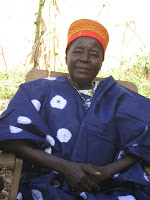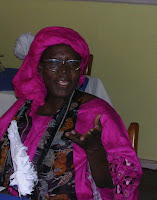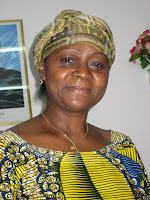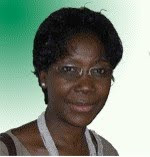par André Zouré, Maire de Garango, ville natale de Monique
Monique, une femme au cœur d’or que j’ai
côtoyée et appréciée depuis ses
origines paysannes, très modeste, que rien ne prédestinait à un avenir
plein de
félicité et pourtant!
Mariée, Dieu merci, à un instituteur, ils ont
évolué loin des conforts douillets
des quelques rares métropoles des années 60 à 90, Monique a vite compris
qu’elle avait une mission humanitaire à accomplir autour d’elle pour
transformer les mentalités rétrogrades d’antan, notamment la condition
de ses
consoeurs des milieux ruraux.
Ainsi donc, Monique, sans doute grâce à la
tolérance de son mari, a
démarré, dans les années 70, une mission titanique d’encadrement de ses
sœurs
de Zoaga d’abord, Zabré ensuite. D’associations en groupements, elle a
réussi
avec ses qualités exceptionnelles de femme battante à braver les
préjugés, oh!
combien tenaces et négatifs d’une société qui ne concevait pas la femme
en
dehors du foyer. C’est justement en partant de cette conception
anachronique et
négativiste qu’elle a pris le contre-pied de ses détracteurs pour
baptiser son
œuvre en l’appelant «Pag la yiri»* (la femme
c’est le foyer). C’est comme pour dire qu’elle n’était nullement en
porte-à-faux avec les traditions, mais que c’est cette notion
absolutiste de la
femme maintenue dans l’obscurité et l’obscurantisme qu’elle voulait
plutôt
effacer du comportement des hommes.
Aussi, en développant
le rôle social et économique qu’une femme formée
et éduquée peut jouer en faveur de l’émancipation de la cellule
familiale
d’abord, puis de la société entière, Monique, petit à petit, avec
ténacité et
patience, a acquis la confiance des uns et des autres et a, au fur et à
mesure
emporter l’adhésion des plus sceptiques;
et le rayonnement des résultats obtenus
grâce aux divers projets que ses nombreux partenaires ont appuyés, a
fait le
reste.
Au
fil des ans, Monique s’est révélée un stratège en matière de
développement
participatif et une visionnaire de son temps, aidée en cela, il est
vrai, par
un réseau relationnel riche tant à l’intérieur qu’à l’extérieur du
Burkina
Faso, au sein duquel viennent en première ligne, les prêtres de Zabré,
Mme «Scho»
(Scholastique Kompaoré) comme elle aimait à l’appeler, sans oublier Mme
Nignan
Marie, qui furent ses meilleures conseillères et guides jusqu’à son
dernier
souffle.
Aujourd’hui, 10 ans après sa disparition, il est
loisible de lui rendre
hommage à travers quelques témoignages en guise de devoir de
reconnaissance
car, faut-il l’occulter? Monique est tombée les armes à la main, oui les
armes
à la main puisque c’est lors de ses multiples missions à l’étranger que
s’est
accentué le mal qui la rongeait malicieusement et silencieusement, elle
qui n’y
accordait pas de l’importance tant elle s’était vouée à sa mission
sacerdotale.
C’est donc malgré les efforts de la médecine et le
soutien de tant de
parents et d’amis que Monique a quitté prématurément ce monde laissant
derrière
elle ce vaste chantier inachevé et surtout ses nombreux enfants éplorés à
qui
elle a légué son image de bonne mère exemplaire, qui ne s’est jamais
dérobée à
ses devoirs maternels malgré le surcroît de travail qui l’absorbait
constamment.
Seul le ciel peut être
sa récompense.
*
Note des Editeurs : Chez les Mossi, "Pag la yiri" est une idée de
base. Par ailleurs, le Projet Unesco intitulé "Egalité d'accès des
femmes
et des jeunes fille à l'education" était reconnu partout sous
l'appelation
de "Pag la yiri."
Click below for the ENGLISH version!
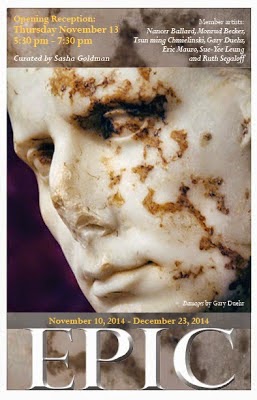 UNESCO/UNITWIN Affiliate Unbound Visual Arts (UVA) recently opened an exhibit at the Harvard Allston Education Portal in Massachusetts. The exhibition is based on the "ancient Greek epic poems, Homer's Iliad and Odyssey, which served as source material for some of the earliest themes in artwork." The exhibit will run through 23 December, and features the work of seven UVA artists. More information can be found on the UVA website.
UNESCO/UNITWIN Affiliate Unbound Visual Arts (UVA) recently opened an exhibit at the Harvard Allston Education Portal in Massachusetts. The exhibition is based on the "ancient Greek epic poems, Homer's Iliad and Odyssey, which served as source material for some of the earliest themes in artwork." The exhibit will run through 23 December, and features the work of seven UVA artists. More information can be found on the UVA website.







